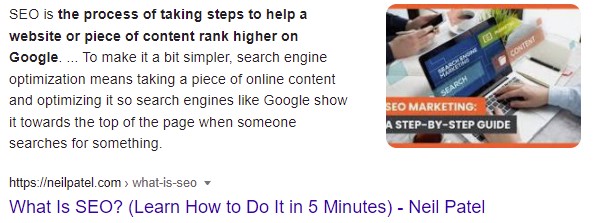How to increase organic traffic to your website
If someone says it’s easy to build organic traffic, don’t believe them. This is probably the job that will require the most investment of time and effort on your part.
In an age of Facebook and Google Ads, spending a few dollars for immediate traffic is highly attractive. But it’s not sustainable. You get traffic now, but what happens when you stop paying? Will your content be found again?

7 Tips to Increase Your Organic Traffic
Organic traffic means that the content you put on your site today will drive traffic tomorrow, next month, or maybe even a few years from now, depending on your niche, competition and consistency.
It takes time, which is why many people give up before they even start or wonder if it’s worth it. The answer to this all-too-common question is, yes, it’s worth a lot, because you don’t see that kind of ROI on paid traffic. That is, that type of traffic that sustains itself and allows you to create a lasting relationship with your audience.
When it comes to getting more organic traffic, there are good strategies and even better ones. But there are also bad practices that must be avoided.
Creating content by creating, because you’ve heard that publishing articles regularly is good for SEO, won’t get your business very far. In fact, it can even damage your reputation.
Want to get it right? Check out the seven tips we’ve listed below.
1. Create a blog
To generate organic traffic to your website, you need to create textual content, because that’s what search engines can read, so start by making a blog.
This tool is exceptionally beneficial to your online business because, in addition to driving traffic to your page, it helps you reach your target audience and build your authority.
A blog requires the publication of content regularly, and it is essential that it provides visitors with relevant information. As we said before, writing for writing is not worth it.
Define some keywords for your business and work these themes in your posts. Share your updates on your other channels and, over time, the results will follow.
– Step-by-step to create a blog
2. Optimize content for the featured snippet
The featured snippet is a box that appears at the top of search results and provides users with a direct answer to their query.

Why do you want that? Because the first result that appears on an organic search earns 34% of clicks.
If you’re familiar with the featured snippets, you’ll know they occupy the zero position in the search results. By ranking in Position Zero, you maximize your online visibility to users.
Even better, you get valuable traffic from the first search result, reducing the click through rate (CTR) of the first result by 8%, taking traffic away from your competitors.
However, there is no clear rule on how you can gain the featured snippet’s position, but there are strategies you can follow to increase your chances of appearing there:
- Use bulleted or numbered lists to answer a question: Lists are a great way to reach the position of the highlighted snippet. It doesn’t mean that you should fill your page with lists, but rather find the right places to integrate them. For example, if you’re trying to rank for a query on “how to get up early” a bulleted or numbered list of tips would be extremely helpful to readers. And Google knows!
- Deliver a short, to-the-point answer: Another way to optimize featured snippets is to provide a straight answer. Don’t beat around the bush and add unnecessary details to increase your word count, answer exactly what readers want to know. See the example below:

In addition, it’s also crucial that you integrate your main keyword into the section you want to optimize for your featured snippet.
3. Integrate relevant keywords into your page
The next step to getting more organic traffic is to integrate relevant keywords throughout your website.
Keywords play a key role in helping your pages rank well in search results.
To choose the right terms, here are some tips:
- Conduct keyword searches using tools like Google Adwords, SemRush, and Ubersuggest.
- Make a list of terms related to your industry that your target audience might search for.
- Focus on long-tail keywords (3 or more words) that face less competition.
The use of keywords in all your content is essential to optimize your SEO and increase the chances of your business being seen.
Use it on your pages, blog, ads, etc. But be careful not to overdo it! Google identifies and punishes these bad practices.
– How to research keywords for your SEO strategy
4. Create a compelling title tag and meta description
When users do a search, the first thing they see in the results is the tag title and meta description of the content in question.
 The title tag and meta description can be why someone enters (or does not) on your site. If you optimize these two components, making them more interesting and persuasive, you can get much better results.
The title tag and meta description can be why someone enters (or does not) on your site. If you optimize these two components, making them more interesting and persuasive, you can get much better results.
Focus on keeping your title within 60 characters. Make sure your keyword is there and do your best copywriting, creating attractive text that encourages clicks.
The meta description must be a maximum of 160 characters. Use your keyword and make sure it gives your audience a summary of what they’ll find on your page.
5. Upload videos to YouTube
Google search can be quite competitive when it comes to specific keyword phrases. But in YouTube SEO, everyone has an equal opportunity to entertain, engage and rank.
That’s because, while keywords and search intent are important, the main component of YouTube SEO is high engagement, i.e. metrics like like/dislike, clickthrough rate (CTR), average time to view, etc.
YouTube wants viewers to stay on its platform as long as possible, which helps it profit more from advertising. And it rewards content producers with visibility.
Start by scripting your videos. Plan the stories you will tell, the hook you will use, and the content you will present. Then strategically edit your videos to make them fun and engaging. Believe me, all magic happens in editing!
Video ready, do SEO optimization on YouTube page, including title, description, tags and thumbnail.
Publish and promote. The first 24 to 48 hours after publication is the critical period. Ideally, you should post at the “best time” (check your YouTube Analytics), respond to all comments and promote it heavily.
6. Secure your social media presence
Social media marketing offers another great opportunity to drive organic traffic by driving users who visit your networks to your site.
You can share your profile pages, promote your blog articles, YouTube videos and increase engagement with your brand.
Nowadays, social networks are an indispensable channel for relating to the public, including being a direct sales channel for many companies.
In addition to driving more traffic to your business, social media allows your followers to act as promoters of your brand, sharing your publications. This is a great form of marketing that costs nothing extra and can greatly leverage organic traffic to your page.
7. Earn backlinks
Backlinks are links from other websites that lead to yours. These links help to increase your site’s trust and authority, which improves your ranking in search results.
The best way to get backlinks is to create relevant content related to your industry. The higher the quality of information you provide, the greater the chance that other sites will use your blog as a reference in their own posts.
Blogs are the best source of backlinks because:
- You can share them on social media
- You can write on multiple topics
- You can add multiple keywords
- You can share them in your newsletters
Because blogs are versatile, they create multiple paths and opportunities for you to reach people, increasing your organic traffic.
Don’t forget to advertise every time you post new content! Make your regular updates part of your audience’s routine.
– How to Use Your Blog as a Marketing Tool
Increase your organic traffic and sell more

If you want to increase organic traffic to your website, it’s time to put these tips into action.
Depending on your niche and competition, it may take time for the first results to show up, but time will pass anyway, won’t it?
Investing in a sustainable growth strategy is the best way to break free from paid advertising, build your brand reputation and maintain a lasting relationship with your audience.
However, if you’re starting your online business now, don’t rule out investing in ads while starting your organic traffic strategies, it’s still the best way to gain visibility faster.
Complete eLearning platform, Coursify.me is the ideal solution for anyone who wants to create, sell and advertise courses on the internet.
Dynamic and customizable Learning Management System (LMS), Coursify.me is optimized for SEO, allows you to integrate your social networks and embed videos from YouTube and Vimeo.
– Learning Management System: What is it?
We have three plan options for you to decide which best suits your needs.
Visit our website, test the platform and start selling online courses right now.

